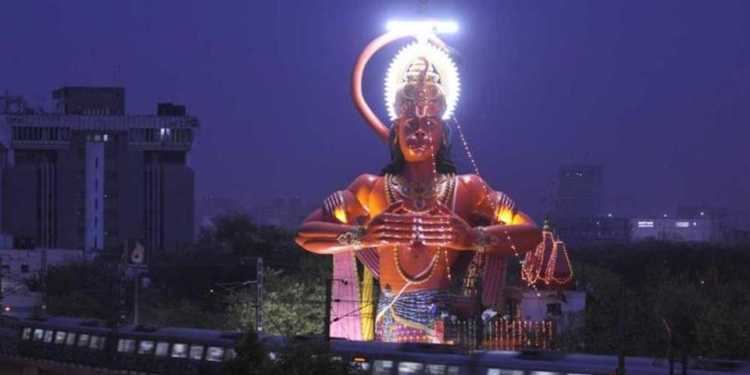Expressing anguish over illegal constructions in Delhi, the High Court suggested that the local authorities consider if they could airlift the 108-feet tall Sankat Mochan Idol at Karol Bagh to remove illegal constructions around it. “Consider if the statue can be airlifted. Speak to the LG. You know, in the US, entire skyscrapers are shifted as a whole,” the bench said. The Court chastised the municipal corporations stating that they have allotted enough opportunities to enforce the law but they didn’t seem too willing to do it.
One wonders if the esteemed judges of the High Court carefully studied the existing literature about the implementation of such an ‘innovative’ suggestion and their applicability to existing Indian conditions or it were just some fancy notion that caught their imagination after reading some magazine or newspaper article. Nevertheless, one tends to think such an attempt would require months of planning, if not years, for it to be successful without causing any damage to the Idol or the surrounding areas.
The suggestion also seems to be rather amusing considering that it’s a much more difficult endeavor than the alternative of enforcing the existing laws regarding illegal constructions. And if the authorities lack the will to even enforce existing laws, how could they ever hope to attempt something as audacious as airlifting a 108-feet Idol? More importantly, since when is the solution to illegal constructions the airlifting of a 108-feet Idol? Surely, illegal constructions aren’t caused by tall Idols and one casual look at data about areas infested with illegal constructions would prove it to be true. Moreover, if the Idol is responsible for the illegal constructions in the area, then wouldn’t airlifting it to somewhere else lead to the development of illegal constructions in the area the Idol has been shifted to? And if the Idol is not responsible for the illegal constructions around it, then why even consider shifting it at all? These are all very basic questions, the answers to which should be fairly obvious to anyone.
Furthermore, there are religious sentiments attached to the Sankat Mochan Idol that must be considered here.
It can be asserted, of course, without any pinch of uncertainty that the Hanuman Idol has significant sentimental value for Hindus. Should the religious sentiments of Hindus be toyed with in such a reckless manner is of course a question that begs serious deliberation. And why should the religious sentiments of Hindus be offended simply because the authorities lack the moral conviction necessary to enforce existing laws? Also, why should Hindus be made to pay the price for the sins of municipal corporations?
After all that has happened over the past year, with all the Hindu festivals that have been either banned or regulated, it won’t come as too much of a surprise if the Secular State chooses to make an attempt to airlift a 108-feet tall Idol, risking all the hazards that such a venture would undoubtedly entail, to compensate for its utter lack of desire to enforce its own existing laws.
Additionally, it reveals the attitude of the Secular State towards Hindus in general. They know that they can afford to hurt the religious sentiments of Hindus and get away with it. Maybe Hindus can take a lesson or two from the Padmavati protests that has led to its ban across several states, maybe that is what it takes to make sure that the Secular State doesn’t make such outrageous attempts.































